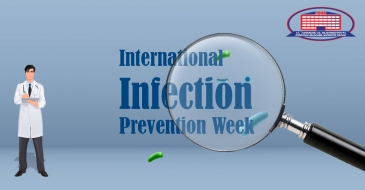H1N1 flu (so-called swine flu) is a respiratory (airway) disease.
This flu virus infects the cells of the nose, throat, and lungs.
The H1N1 virus supposedly will continue to circulate as the seasonal flu for several years. In the post-pandemic period, the virus is expected to remain dangerous to young patients. The risk group in terms of severity will not change. Since the virus can damage the lower respiratory tract, the disease proceeds with viral pneumonia, which is not typical for the general, seasonal flu.
The H1N1 flu is a viral infection that erupted in Mexico at the end of April 2009. Influenza A virus, which is genetically very close to swine flu, is the cause of the illness. However, according to the World Health Organization, this strain has never been isolated from pigs. The virus is easily transmitted from person to person and causes symptoms which are alike to the seasonal flu.
The symptoms of influenza A (H1N1) are the same as the normal flu infection. The disease is characterized by: a headache, body aches, chills, nasal discharge, sore throat, cough, fever, weakening of the body. Some patients have diarrhea and vomiting. In the case of progression and worsening of the condition pneumonia, respiratory failure and death may occur. Like seasonal flu, swine flu infection can aggravate the course of an existing chronic disease.
Therapist at the National Center of Surgery Elene Zhorzholiani talks about H1N1 flu.
- Which group of people is particularly at risk?
- Particular attention should be paid to people who have chronic diseases: asthma, diabetes, heart or kidney diseases.
- When to see the doctor?
- It is necessary to start the treatment timely if you complain about the following symptoms: difficulty breathing, constant vomiting, sudden dizziness, confusion, pain in the abdomen and chest. If you have overcome the symptoms of the flu, and suddenly the temperature has risen or you have a severe cough. Since the symptoms of the swine flu and the seasonal flu are very similar, and it will be difficult for the patient to distinguish between these symptoms, it is recommended to consult with a doctor promptly, especially if you are in the area where the virus spreads.
- How does H1N1 spread?
- Like the seasonal flu virus, H1N1 is transmitted by airborne droplets, namely: during coughing, sneezing, after the contact with an infected object. When coughing and sneezing, droplets containing the virus spread in the air and thus it is possible to infect other people or contaminate other objects or surfaces. In addition, an item is considered infected if a patient with the flu has contacted it with an eye, nose, or mouth. A (H1N1) does not spread through food, including pork meat, or thermally processed (boiled or fried) food.
- What can you tell us about the incubation period of H1N1?
- From an infected person, viral infection A (H1N1) can spread to other people before the onset of symptoms, the day before, or the person may not even know that he/she is infected and spreading the infection. An adult is a carrier of infection for 7 or more days from the onset of symptoms, children for a longer time.
- How to protect yourselves from the H1N1 virus?
- The first and most important rule of protection from the swine flu is personal hygiene. Frequently and thoroughly, for a half minute, wash your hands with warm water and soap or detergent containing alcohol. Do not touch the object and surface that may be infected. Avoid crowded places. Use masks to protect yourself from viral droplets that are in the air after the infected person coughs or sneezes. Take food rich in vitamins, drink plenty of fluids.
National Center of Surgery address – Tbilisi, Digomi Chachava street N5.
You can contact the Call-center of the National Center of Surgery at 577 119 119 or 2 02 25 25;
If you have some questions, you can contact the therapist at the National Center of Surgery Elene Zhorzholiani at 597 17 87 17.
Wish you health!









